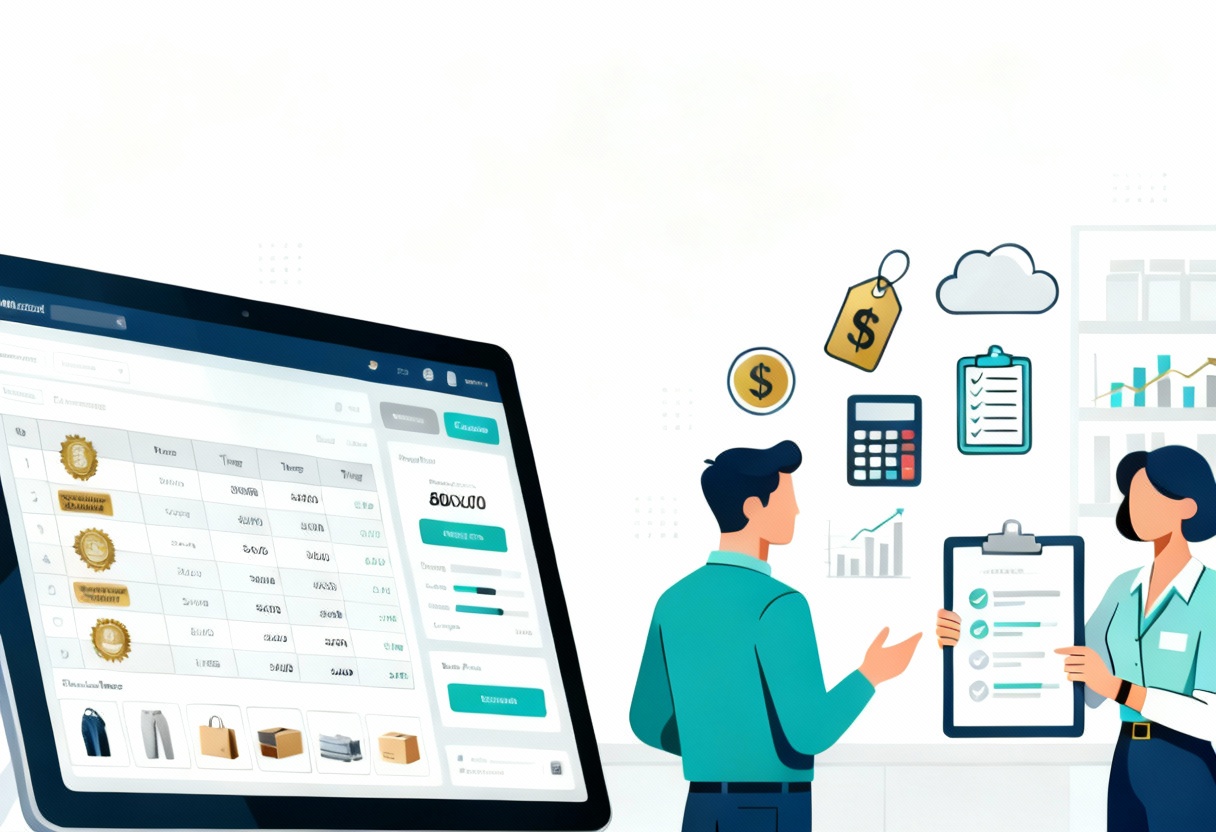Pricing a WooCommerce POS system is rarely as simple as comparing numbers on a pricing page. The true cost depends on licensing models, including features, add-ons, hardware, and long-term support, all of which shape return on investment and operational stability. For retailers, understanding these variables is the difference between a POS that accelerates growth and one that becomes a hidden expense.
This article from ConnectPOS provides an expert perspective on what drives WooCommerce POS pricing, where hidden costs often appear, and how decision-makers can align system investments with their retail strategy.
Highlights
- WooCommerce POS pricing is shaped by licensing, functions, add-ons, and hardware, with subscription plans spreading costs and one-time licenses requiring upfront spend.
- The pricing models include free, one-time, and subscription options, while hidden costs often arise from hardware, processing fees, integrations, and training.
Key Factors That Affect WooCommerce POS Pricing
WooCommerce has become one of the most influential ecommerce platforms, with over 6.1 million live websites and nearly 8.25 million sites that have used it historically (BuiltWith). By 2024, it holds a 20.1% global market share among all ecommerce websites (MobiLoud). This widespread adoption drives rising demand for WooCommerce-integrated POS systems and raises questions about the key factors that shape the WooCommerce POS pricing and ongoing costs.

Software Licensing Model
WooCommerce POS systems often follow two licensing structures: subscription-based or one-time purchase. A subscription gives businesses access to updates and continuous improvements while spreading costs over time, which appeals to stores that value predictable monthly expenses.
A one-time purchase, in contrast, demands a higher upfront payment but may work for merchants who want to avoid recurring fees. Both models affect long-term budgeting strategies and determine how quickly a store can adapt when the software evolves.
Decision-makers must also consider scalability under each model. A subscription plan of WooCommerce POS pricing usually scales costs as the store grows, while perpetual licenses may require additional spending for upgrades or compatibility fixes. The choice between these approaches directly shapes financial planning, upgrade cycles, and the ability to stay aligned with future retail needs.
Features Included
The baseline functions included in a POS package have a direct influence on cost. Inventory management, payment processing, order synchronization, and customer tracking are often bundled together, but the depth of each function can vary widely between providers. A store with simple requirements may find value in an entry-level package, while retailers that depend on more detailed reporting or multi-location control will naturally face higher pricing.
Understanding the relationship between cost and functionality requires an internal assessment of operational needs. Overpaying for unused functions creates waste, while choosing a package that is too limited introduces hidden costs later. Evaluating how each function supports sales, compliance, and customer experience provides a clearer picture of whether the system justifies its price.
Add-Ons and Integrations
WooCommerce thrives on an ecosystem of plugins that extend its capabilities, and POS systems follow the same logic. Integrations for loyalty programs, accounting tools, or eCommerce marketplaces may be priced separately, which directly influences WooCommerce POS pricing. Each add-on creates measurable value but also builds cumulative expense, so merchants must carefully align integration choices with operational priorities and budgets.
►►► Optimal solution set for businesses: Multi store POS, Next-gen POS, Inventory Management Software (MSI), Self Service, Automation, Backorders
The complexity of integrations often increases support requirements as well. A system connected to accounting platforms like QuickBooks or ERPs introduces ongoing alignment work, which can increase the total cost of ownership. Businesses evaluating WooCommerce POS must account for this dynamic since the promise of a tailored system comes with long-term financial implications tied to these extensions.
Hardware Costs
Hardware contributes a substantial portion of the overall POS investment. Cash drawers, receipt printers, barcode scanners, and payment terminals must be compatible with WooCommerce POS, and costs vary depending on the scale of the deployment. For a single-location convenience store, the expense might remain moderate, while multi-branch retail networks often require larger setups and replacements over time.
Durability and compatibility also affect the total spend. Cutting costs on equipment may lead to frequent repairs or replacement cycles, while higher-quality hardware increases upfront cost but often delivers better longevity. Decision-makers must balance these dynamics, knowing that hardware choices influence both staff productivity and customer experience at checkout.
Support and Maintenance
Every POS system requires ongoing upkeep. Software updates, bug fixes, and security patches must be maintained to avoid downtime and compliance risks. Some providers include this in the licensing fee, while others charge separately for service-level agreements. The scope of support, whether limited to business hours or around-the-clock, directly impacts cost and reliability.
Maintenance also includes staff training, troubleshooting, and system audits. A POS is more than software; it is the central nervous system of retail operations, and neglecting its upkeep can disrupt transactions and inventory accuracy. Budgeting for support should be viewed as a safeguard against operational disruptions, not an afterthought in the purchasing process.
Typical WooCommerce POS Pricing Models
WooCommerce POS systems follow different pricing structures depending on how the vendor delivers the product and what level of functionality the merchant requires. Some models focus on accessibility for new businesses, while others are designed for established retailers that prioritize stability and scalability. A clear understanding of these structures helps decision-makers plan budgets with accuracy and align investments with long-term business goals.
The choice of WooCommerce POS pricing model affects both upfront costs and the predictability of ongoing expenses. Businesses often compare the flexibility of recurring payments with the sense of control provided by larger one-time investments. Each approach carries its own benefits, risks, and trade-offs that need to be assessed carefully within the broader company strategy.
- Free and Freemium Options: Some providers make an entry-level version available at no cost, which is attractive for small retailers testing digital POS systems. These editions often include basic checkout and inventory tools but require paid upgrades for advanced needs like multi-location management or detailed reporting.
- One-Time License Fees: A single upfront payment grants lifetime access, usually packaged with a limited period of updates and support. This model appeals to businesses that value ownership and dislike recurring bills, though it carries the risk of software becoming outdated without ongoing investment in updates.
- Monthly or Annual Subscriptions: Subscription pricing spreads costs over time while delivering continuous updates, security patches, and support. Plans often scale by business size, giving flexibility to expand functionality as operations grow, though cumulative payments may exceed a one-time license in the long run.
Hidden Costs to Watch Out
The WooCommerce POS pricing system often extends beyond the advertised license or subscription fee. Retailers must account for a range of indirect expenses that influence the total cost of ownership. Ignoring these factors can create budget overruns and lead to mismatched expectations between vendor promises and actual operational requirements. A deeper understanding of these hidden costs provides clarity when forecasting ROI and planning long-term technology adoption.
- Hardware Setup: While entry-level hardware bundles may look affordable, businesses often discover that replacements, upgrades, and peripheral devices add to the bill over time. Evaluating hardware quality and compatibility with existing systems helps avoid recurring costs associated with frequent replacements or performance issues.
- Payment Processing Fees: Providers may advertise low software costs but recoup margins through higher payment processing rates. Business owners should scrutinize contract terms, compare provider rates, and calculate how fees scale as transaction volumes increase. Even slight differences in percentage points can reshape profit margins over months and years.
- Customization and Integration Costs: These costs not only impact the initial setup but can also reappear whenever system updates conflict with custom-built functionalities. Strategic planning is required to balance convenience against the long-term financial commitment of tailored integrations.
- Staff Training and Onboarding: Some vendors include training modules, while others charge separately for onboarding support. For multi-location businesses with high employee turnover, recurring training costs can be significant. Investing upfront in comprehensive training reduces future errors, yet companies should still budget for ongoing education as teams evolve.
ConnectPOS’s WooCommerce POS Solution – What You’ll Get from It
When businesses compare WooCommerce POS pricing, the real question is whether the system delivers value that justifies the cost. ConnectPOS positions itself as more than a transaction tool, providing a full retail management platform that lowers the risk of hidden costs tied to add-ons, integrations, or inefficiencies. The ConnectPOS system centralizes sales, inventory, and customer operations, helping merchants extract the most value from their chosen pricing model.
Feature
- Customer Insight: Track profiles and history to personalize experiences and retain repeat shoppers without relying on separate CRM systems.
- Real-Time Retail Operations: Sync directly with WooCommerce for accurate, immediate updates across sales and stock, cutting down the need for manual adjustments.
- Flexible Checkout: Manage in-store and mobile transactions smoothly, giving customers more choice while keeping transaction costs predictable.
- Omnichannel Sales and Fulfillment: Connect online and offline sales in one system, with tools to manage pickups, deliveries, and payment options without extra software spend.
- Inventory Management: Keep track of stock across channels, variations, and locations, ensuring accuracy that protects margins and prevents waste.
- Customer Programs: Simplify returns and loyalty management within the POS, removing the need for third-party subscriptions.
- Employee Access Control: Assign permission levels to staff, strengthening security without investing in additional IT layers.
- Payment Integration: Accept a wide range of WooCommerce-supported gateways for secure, fast transactions without costly middleware.
- Sales Reporting and Analytics: Access both online and offline sales reports, supporting smarter decisions while saving time on manual data entry.
- Third-Party Integrations: ConnectPOS integrates with accounting, ERP, CRM, and payment platforms, reducing the long-term cost of disconnected systems.
Pricing
ConnectPOS uses a subscription pricing model with tiered plans for different retail stages. Small businesses can start with core POS features and WooCommerce integration, while higher tiers support multi-location management, analytics, and enterprise connections. Pricing is transparent, with updates included and extra fees only for premium functions, helping retailers scale costs with growth.
Current plans start at $39 per month, moving up to $89 per month for mid-sized businesses and $199 per month for enterprises that need extensive customization and integrations. A free trial is also available, helping decision-makers test capabilities before committing.
FAQ: WooCommerce POS Pricing
How is WooCommerce POS priced?
WooCommerce POS pricing usually follows a subscription model with monthly or annual fees. This approach allows retailers to plan technology expenses more accurately while scaling costs as their operations grow.
Do I need to pay extra for add-ons or advanced tools?
Yes. While core POS and WooCommerce integration are included in entry plans, features like multi-location management, advanced reporting, or API access are usually available as paid add-ons or in higher tiers.
Are updates and support included in the subscription?
In most cases, regular updates, bug fixes, and basic customer support are part of the package. Extra services or priority support may require an upgrade.
Conclusion
WooCommerce POS pricing is not just about choosing the cheapest plan, it’s about aligning investment with the scale and complexity of your retail operations. Factoring in licensing models, hardware, integrations, and long-term support helps keep the POS system an asset rather than a liability.
ConnectPOS delivers clarity with transparent subscription tiers, built-in omnichannel features, and enterprise-level integrations that scale as you grow. To explore how ConnectPOS can support your retail strategy, start your free trial today and experience a WooCommerce POS solution built for sustainable growth. Contact us now!
►►► Optimal solution set for businesses: Shopify POS, Magento POS, BigCommerce POS, WooCommerce POS, NetSuite POS, E-Commerce POS



